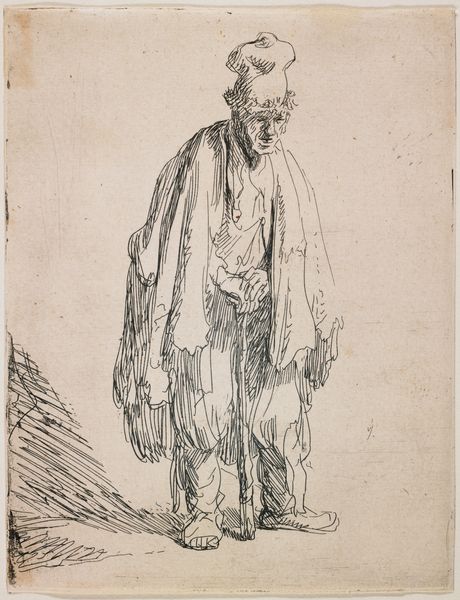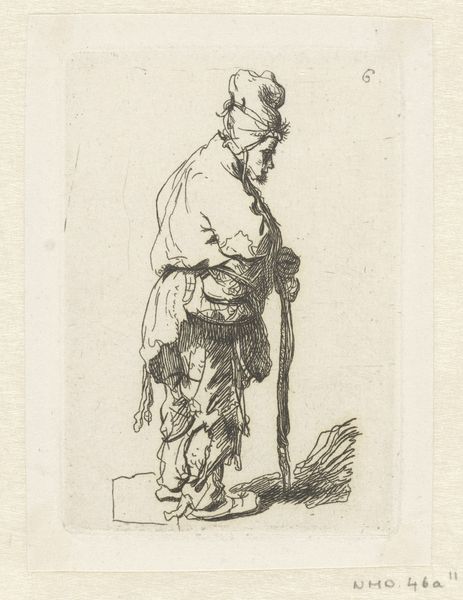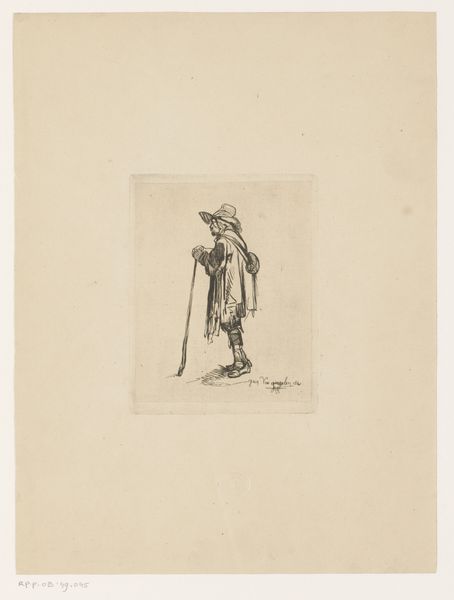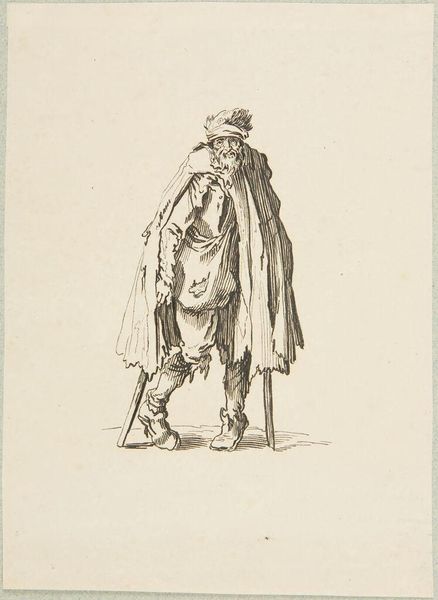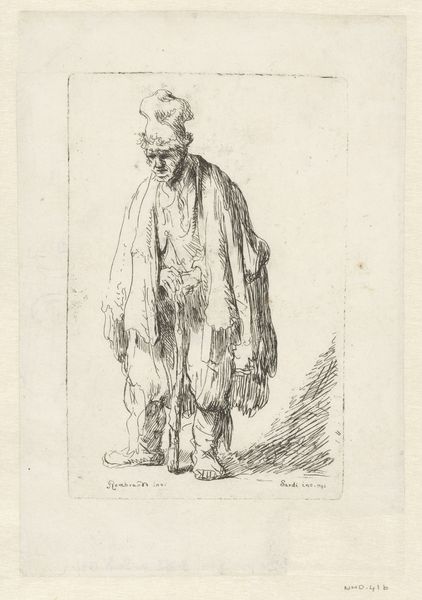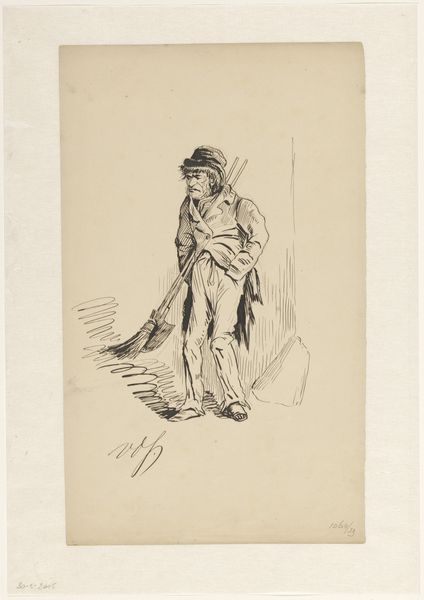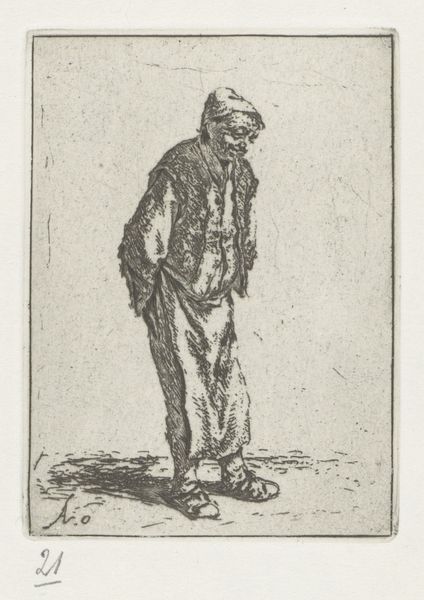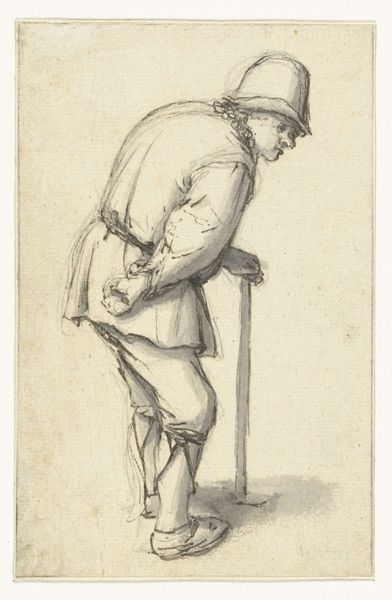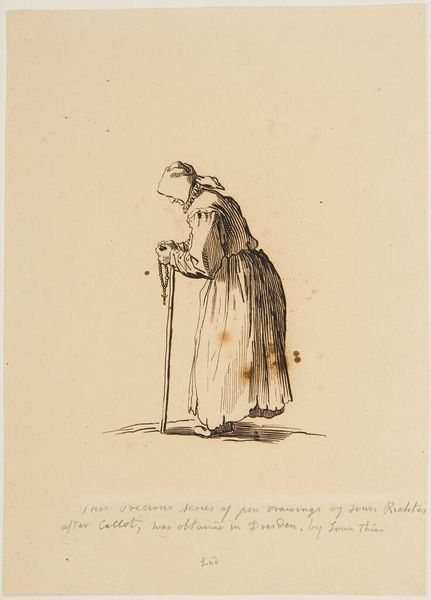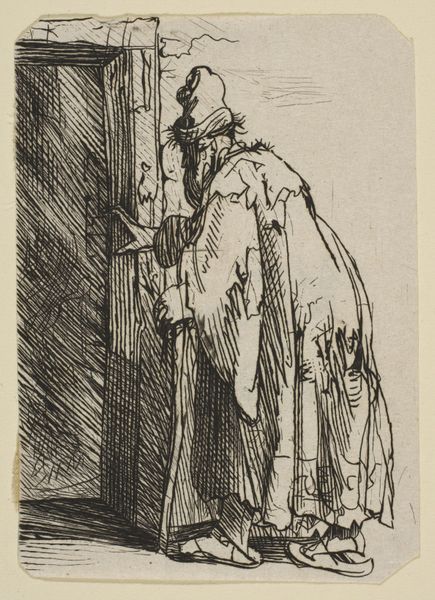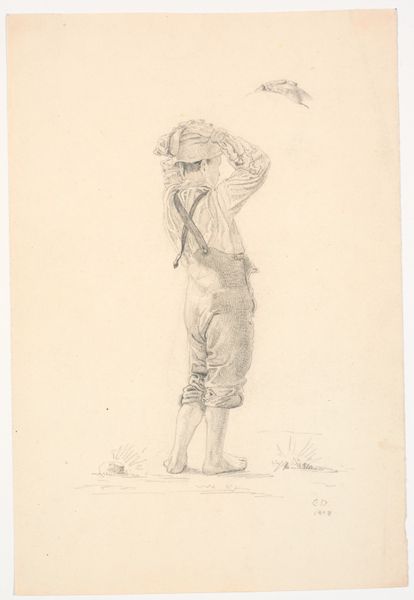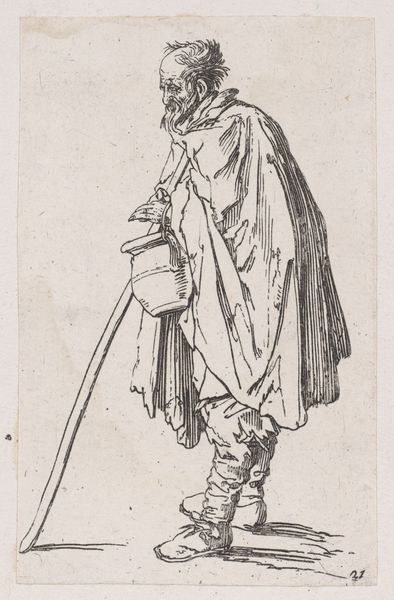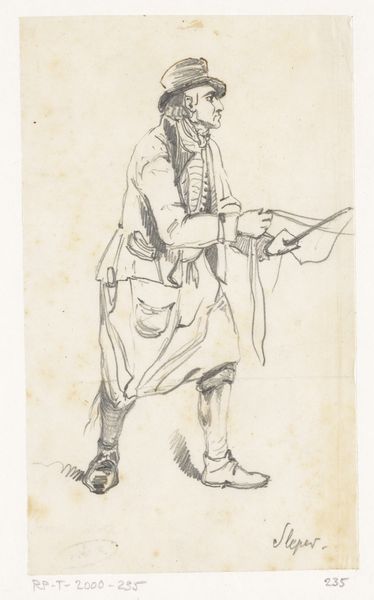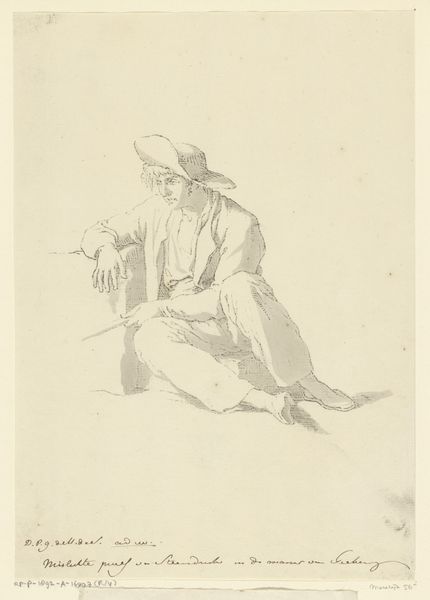
Dimensions: height 113 mm, width 82 mm
Copyright: Rijks Museum: Open Domain
Curator: The figure in this etching is fascinating. "Man Leaning on a Stick" by Jan Izaak van Mansvelt—somewhere between 1771 and 1802, a ghost in powdered wig leans all his weight into what? Nothing? Editor: I feel that! He’s like a question mark made of melancholy and linen. All that gorgeous rendering of fabric, for what? A study of the art of listlessness? It feels intensely…theatrical somehow. Curator: It's interesting that you picked up on that. Van Mansvelt seems to have aimed at rendering the inner self of an ordinary fellow. But instead he has become a character from some street play, hasn't he? The exaggerated posture. Those bulbous pantaloons. What could it signify? Editor: I read the costume as almost clownish—that slight awkwardness, the almost forced nonchalance—and the staff…well, it reminds me of the classical attribute of Folly. It feels like he's burdened by some awareness, like he's chosen this pose as a defense. A subtle statement. The posture makes him a sort of theatrical fool and intellectual. I don't know; this stance. This need to lean...he's carrying something. Curator: A weight indeed, carried so lightly… It feels like a parody almost, on Enlightenment's emphasis on reason. Van Mansvelt reminds me of the Symbolists, or the Expressionists, but decades ahead of time. This everyday pose contains, and conceals a real critique! The man holds his wooden stick as a way to stand, the same way as people during The Enlightenment needed some principles to ground themselves on! Editor: Right. He looks utterly alone with it, which is precisely why the image haunts me. The details – that little puff of fabric at the elbow, the shadowed face – contribute to an atmosphere of such deep solitude. Curator: And you're correct, his hidden face allows him to stand for so many of us—a figure against a backdrop of nothing in particular. He's romantic because he's tragic and because, maybe, this etching makes tragedy bearable. It gives it elegance. Editor: Elegance despite himself! A testament to the beautiful ways humans deflect and carry on, or lean on when they're able. It gives so much depth to simple things!
Comments
No comments
Be the first to comment and join the conversation on the ultimate creative platform.
